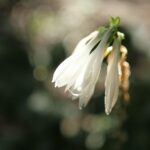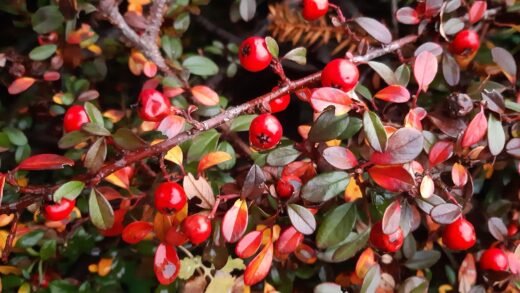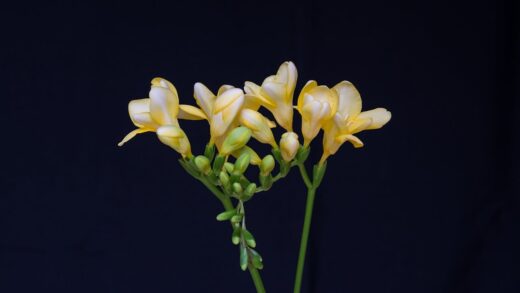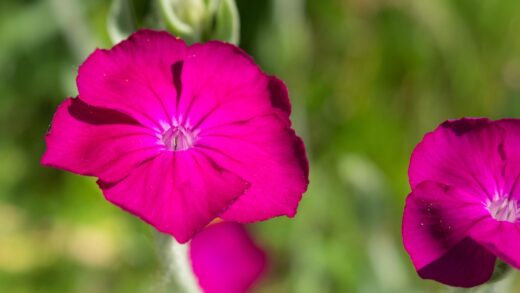Coleus, celebrated for its vibrant and intricately patterned foliage, represents a cornerstone of ornamental gardening for both indoor and outdoor settings. Achieving the full potential of its stunning color palette requires a nuanced understanding of its fundamental needs, from light and water to soil and temperature. Proper care ensures not only the survival of the plant but also promotes the vigorous growth and intense coloration that make it so highly prized. This comprehensive guide delves into the essential practices that underpin the successful cultivation of healthy, eye-catching coleus specimens, providing a framework for both novice and experienced gardeners to follow. These principles are universal, applying to the vast array of cultivars available today, each with its unique charm and character.
The foundation of effective coleus care begins with selecting an appropriate growing medium. These plants thrive in a well-draining, yet moisture-retentive soil that is rich in organic matter. A high-quality peat-based potting mix is often ideal, as it provides the necessary aeration to prevent root rot while holding sufficient water to keep the plant hydrated. For garden-grown coleus, amending the native soil with compost or well-rotted manure improves its structure and fertility, creating a welcoming environment. The pH of the soil should be neutral to slightly acidic, typically in the range of 6.0 to 7.0, for optimal nutrient uptake and overall plant health.
Temperature and humidity play a crucial role in the vitality of coleus, as these plants are native to tropical and subtropical regions of Asia and Australia. They are highly sensitive to cold and will not tolerate frost, making them suitable as annuals in temperate climates or as houseplants that can be moved indoors during winter. The ideal temperature range for active growth is between 18°C and 29°C (65°F and 85°F). Maintaining adequate humidity is also beneficial, especially for indoor plants, and can be achieved by misting the foliage, using a pebble tray, or placing a humidifier nearby.
Finally, consistent monitoring is a key aspect of proactive coleus care. Regular inspection of the leaves, stems, and soil can help in the early detection of potential issues such as pests, diseases, or nutritional deficiencies. Observing the plant’s response to its environment allows for timely adjustments in watering, feeding, or light exposure. This attentive approach ensures that minor problems are addressed before they can escalate, safeguarding the plant’s beauty and vigor throughout the growing season. A well-cared-for coleus is a testament to the gardener’s diligence and understanding of its specific horticultural requirements.
Understanding the growing environment
The selection of a suitable location is paramount for the successful cultivation of coleus, as it directly influences the plant’s growth habit and foliage coloration. While traditionally considered shade-loving plants, many modern cultivars have been bred to tolerate or even thrive in brighter conditions. The key is to provide the right balance of light, protecting the plants from the harsh, direct midday sun which can scorch the leaves and cause the vibrant colors to fade. An ideal spot might be one that receives gentle morning sun and dappled or indirect light for the remainder of the day, such as under the canopy of a tall tree or on an east-facing porch.
Air circulation is another critical environmental factor that is often overlooked in coleus care. Good airflow around the plants helps to prevent the development of fungal diseases, such as downy mildew and powdery mildew, which flourish in stagnant, humid conditions. When planting in garden beds or containers, spacing the plants appropriately allows for adequate air movement between them. For indoor coleus, avoiding overcrowded windowsills and ensuring the room is well-ventilated contributes significantly to their health, reducing the risk of disease outbreaks and promoting robust, sturdy growth.
The composition of the growing medium has a profound impact on the root system and, consequently, the overall health of the coleus. The soil must be able to retain enough moisture to prevent the plant from wilting, yet it must also be porous enough to allow excess water to drain away freely. A compacted, heavy soil can lead to waterlogged roots, which deprives them of oxygen and creates an anaerobic environment ripe for root rot pathogens. Incorporating materials like perlite, vermiculite, or coarse sand into the potting mix can significantly improve its drainage capacity and structure.
Furthermore, the microclimate of the planting area should be considered. Factors such as proximity to buildings or paved surfaces can affect ambient temperatures and light reflection, creating hotter and drier conditions than in other parts of the garden. Coleus planted in containers, especially dark-coloured ones, are more susceptible to their roots overheating in direct sun. Understanding these subtle environmental variables allows for strategic placement and proactive care, ensuring the coleus is situated in a location that supports its long-term health and maximizes its ornamental appeal.
Routine maintenance practices
Regular watering is a non-negotiable aspect of coleus care, as these plants have a notable thirst, especially during periods of active growth in warmer weather. The soil should be kept consistently moist but never soggy or waterlogged. A reliable method for determining when to water is to check the top inch or two of the soil; if it feels dry to the touch, it is time to provide a thorough soaking. It is crucial to water the base of the plant directly, avoiding the foliage as much as possible, as wet leaves can increase the risk of fungal infections. During winter, when the plant’s growth slows, watering frequency should be reduced significantly.
Fertilization provides the necessary nutrients for coleus to produce its signature lush, colorful foliage. During the peak growing season, from spring through summer, applying a balanced, water-soluble fertilizer every two to four weeks is highly beneficial. A formulation with equal parts nitrogen, phosphorus, and potassium (e.g., 10-10-10 or 20-20-20) diluted to half-strength is generally recommended. Over-fertilizing should be avoided, as it can lead to a buildup of salts in the soil, which can burn the roots and negatively impact the plant’s health, sometimes resulting in leggy growth with less intense leaf coloration.
Pinching back the growing tips of the coleus is an essential maintenance task that promotes a fuller, bushier plant. This simple act encourages the plant to branch out from the nodes below the pinch, preventing it from becoming tall and leggy. Additionally, it is important to remove any flower spikes as soon as they appear. While the small, blue or white flowers are pleasant, allowing the plant to bloom and set seed diverts energy away from foliage production, often leading to a decline in the quality and vibrancy of the leaves and a lankier overall appearance.
Container-grown coleus will eventually require repotting as they grow and their root systems fill the available space. Signs that a plant is root-bound include roots emerging from the drainage holes, slowed growth, and the soil drying out more quickly than usual. Repotting into a container that is one size larger provides fresh, nutrient-rich soil and more room for the roots to expand. This process is best done in the spring before the onset of vigorous growth, and it offers an opportunity to inspect the root ball for any signs of disease or decay.
Managing light and color
The intensity and duration of light exposure are perhaps the most influential factors in determining the color of coleus foliage. Different cultivars have different light requirements, a crucial detail for achieving the desired aesthetic. For deep, rich colors like burgundies, purples, and dark reds, a location with bright, indirect light is often optimal, as too much direct sun can cause these pigments to fade or wash out. Conversely, some newer varieties, often marketed as ‘sun coleus’, have been specifically developed to handle full sun and will display their most brilliant colors, including vibrant yellows, pinks, and oranges, only when exposed to several hours of direct sunlight.
Observing the plant’s leaves provides direct feedback on whether its light conditions are appropriate. If a brightly colored coleus begins to appear dull or its variegation becomes less distinct, it may be receiving too much shade and should be moved to a brighter location. On the other hand, if the leaves appear bleached, scorched, or have crispy brown edges, the plant is likely getting too much direct, intense sunlight. Gradual acclimatization is key when moving a coleus to a different light environment to prevent shock and allow the plant to adjust its pigmentation levels accordingly.
The relationship between light and variegation is particularly fascinating in coleus. In many varieties, the patterns and combination of colors are a direct response to the light they receive. A plant grown in lower light might produce larger leaves with more green pigmentation to maximize photosynthesis, while the same plant in brighter light might develop smaller leaves with more pronounced and vibrant non-green colors. This adaptability is what makes coleus such a dynamic element in garden design, as its appearance can be subtly manipulated by altering its placement throughout the season.
For indoor cultivation, replicating the ideal light conditions can be a challenge, especially during the shorter days of winter. Placing the plant in the brightest available location, such as an east or south-facing window, is a good starting point. However, direct southern exposure in summer can be too intense and may require the use of a sheer curtain to filter the light. If natural light is insufficient, supplementing with full-spectrum grow lights for 12 to 16 hours a day can maintain the vibrant foliage and prevent the plant from becoming etiolated or stretched.
Seasonal care considerations
As the seasons change, so do the care requirements for coleus plants. In the spring, as temperatures rise and the danger of frost has passed, it is the ideal time to move overwintered plants back outdoors or to plant new ones in the garden. This transition should be done gradually over a week or two, a process known as hardening off, to acclimate the plants to the increased light intensity, temperature fluctuations, and air movement. Spring is also the prime time for active growth, so it is important to begin a regular feeding and watering schedule to support the development of a strong root system and lush foliage.
During the summer months, coleus are typically at their peak, displaying their most vigorous growth and vibrant colors. The primary care focus during this season is providing consistent moisture, as the combination of high temperatures and increased sunlight can cause the soil to dry out rapidly, especially for plants in containers. It is also the most critical period for regular pinching and pruning to maintain a desirable shape and prevent the plant from becoming leggy. Monitoring for pests like spider mites and aphids is also crucial in the summer heat, as these pests tend to proliferate in warm, dry conditions.
With the arrival of autumn and cooler temperatures, the growth of coleus begins to slow down. At this time, it is advisable to reduce the frequency of fertilization, as the plant’s nutrient requirements decrease. As the first frost approaches in temperate climates, decisions must be made about the plant’s future. Garden-grown coleus will not survive a frost, so gardeners can either treat them as annuals and allow them to perish, or they can take cuttings to propagate new plants indoors for the following spring. Potted specimens should be brought inside well before the first frost date.
Winter care for coleus, particularly for those brought indoors, is primarily about maintenance and survival rather than active growth. The plants require significantly less water due to slower transpiration and growth rates, and fertilizing should be stopped entirely until spring. The main challenge is providing adequate light, which is often scarce during winter. Placing the plants in the brightest possible location and supplementing with grow lights if necessary will help them survive the dormant period. It is also important to keep them away from cold drafts and heat sources like radiators, which can cause stress and desiccation.
Troubleshooting common problems
One of the most common issues encountered when caring for coleus is wilting. This is most often a clear sign of underwatering, as the large, thin leaves lose moisture quickly. A thorough watering will typically cause the plant to perk up within a few hours. However, wilting can also be a symptom of overwatering, which leads to root rot. If the soil is wet and the plant is still wilted, it is essential to check the roots for signs of decay—they will appear brown and mushy instead of firm and white. In this case, the affected roots should be trimmed, and the plant should be repotted in fresh, well-draining soil.
Discoloration or fading of the vibrant leaves is another frequent concern. This is almost always related to improper light exposure. If the colors appear washed out or faded, the plant is likely receiving too much direct sun. Conversely, if the variegation is not pronounced and the leaves are predominantly green, the plant is probably not receiving enough light. Adjusting the plant’s location to provide the appropriate level of bright, indirect light for that specific cultivar is the solution. It is a process of observation and adjustment to find the sweet spot for optimal coloration.
Leggy growth, characterized by long, sparse stems with few leaves, is a clear indication that the plant needs more light and more frequent pinching. Coleus plants naturally try to grow upwards towards a light source, and in insufficient light, this growth becomes stretched and weak. Moving the plant to a brighter location and regularly pinching back the growing tips will encourage the development of side shoots, leading to a much fuller and more compact plant. This pruning also has the added benefit of providing material for propagation.
The appearance of pests such as aphids, spider mites, or mealybugs can also pose a problem, especially for indoor plants. These pests feed on the plant’s sap, causing stippling, yellowing leaves, and distorted growth. Early detection is key to effective control. Minor infestations can often be managed by wiping the pests off with a damp cloth or spraying the plant with a strong jet of water. For more persistent problems, insecticidal soap or neem oil are effective and relatively safe options for controlling these common garden and houseplant pests.

















